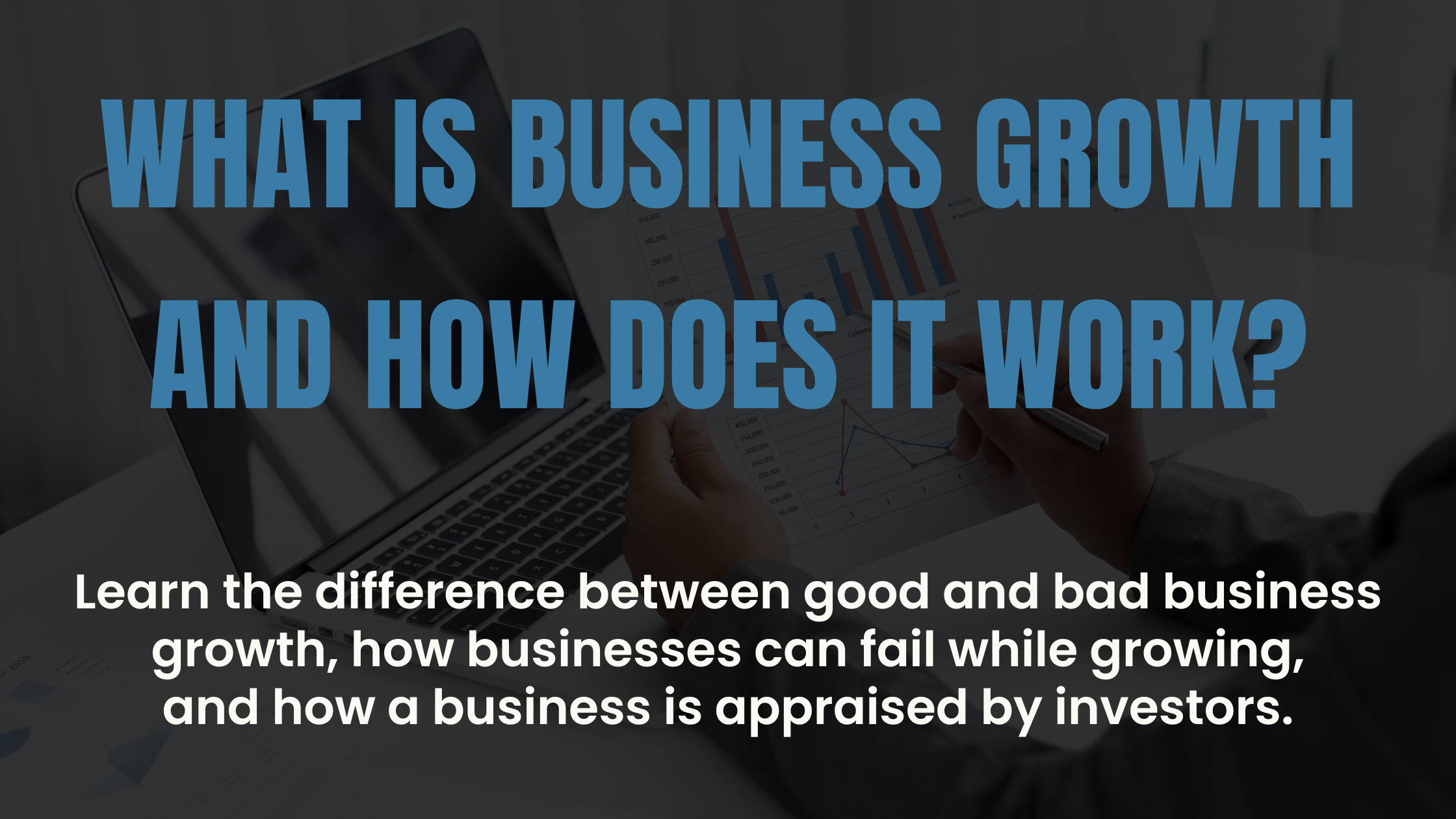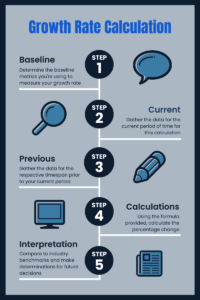
What is business growth, and how does it work?
Growth in a business in and of itself may or may not be a good thing…
Generally, a business’s ability to grow is regarded as a good thing.
It’s usually indicative of:
- having attracted and satisfied more and/or larger orders,
- purchased and built inventory,
- hired and trained staff,
- and developed processes and systems to fulfill more orders.
Capacity has been developed to meet the demands of an increasingly demanding customer. Not to mention, the holy grail of achieving customer satisfaction has been demonstrably achieved.
However, a rapid growth rate can sometimes be a bad thing.
Growth requires funding with additional working capital. This could be bad if facility increases are not planned to keep up with the financing needs of the business. Customer satisfaction could take a dive if delivery time or service quality suffers.
Human resource motivation could be significantly impaired if systems and processes are weak or broken. This can cause substantial effort on the part of employees to coordinate fulfilment orders and completion of delivery.

So when professional investors or stakeholders see a growing company, they are initially impressed. However, their predisposition is to look under the covers and to ask questions to establish the quality of that growth. They do this to better understand the business valuation of a company. This valuation can vary greatly depending on the type of sales and the capacity for growth that the company has established.
Let’s first consider the nature of the sales… If the new sales orders are one-off in nature, an investor will give the business credit. This will increase its appraisal of value.
However, the growth will only be appraised at a stepped-up multiple if the new business is contractual.
Furthermore, it must be recurring into the future.
In other words not all growth is evaluated equally. Business Owners beware as this will be established during due diligence. Demonstrating the dollar value of growth is only one component if you are looking to maximize the value of your business.

Let’s consider how the company has been built. Is it seen by an Investor to have capacity suitable for the size of its business base? Are its competencies operating in a balanced way? Imbalances and lack of capacity cause unintended consequences.
For most companies, a stable platform of growth is achieved when it can demonstrate that it has:
- Delegated responsibilities to a competent leadership team that is managing its affairs;
- Margins that are set at levels equal to or better than the competition and can fund future growth through reinvestment;
- Financial and operating systems that can support the information requirements of growth;
- Human resources that can attract and fulfil the growth;
- Sales processes and systems that can be replicated and controlled to deliver planned growth;
- Operations with planned capacity that is sufficient to fulfil the promises made by sales in a timely manner without sacrificing quality;
- Customer satisfaction that brings them back and is sufficient for them to recommend the product or service to friends or colleagues.
- Contracts that provide legal formality over relationships and transactions.
This is crucial the bigger a company gets. Players can stretch what was intended in a handshake. Money in greater amounts can expose integrity; so better to get everything agreed to in writing to avoid misunderstanding. Good businesspeople have no problem with that.

Many companies fail to set a firm foundation for growth. As a result, they fail in numerous, unintended ways to achieve growth and breakthrough to the next level.
Instead of growing, these companies plateau.
Absence of any of the above competencies, or balance in these disciplines are definable reasons for their lack of success. There are exceptions, but this is true in the vast majority of cases.
Fundamentally, value can be demonstrated if a company is growing in a sustainable and predictable manner. Such growth should result in the company becoming a net generator of cash. Sustainability is illustrated by growing the contractual base of business with customers who order consecutively giving the business recurring income. Such recurring income should be demonstrated via strong processes through the sales funnel that creates predictability for plans and forecasts.

Rapidly growing companies often exhibit weaknesses in operations, and this area is a constant challenge for management. The trick here is to create business plans and forecasts that are achievable.
This enables the company to marshal adequate resources in a timely fashion to fulfill its commitments. All cogs in the business engine must then run smoothly together in a controlled fashion. However this is where the greatest dynamism occurs for most businesses.
In summary, businesses that achieve good quality growth have each of the cogs of the engine working in harmony together. They have set the conditions necessary to grow in a manner that will likely achieve customer satisfaction, repurchase and onward recommendation.

To learn more, check out our process expertise tips sheets here.





